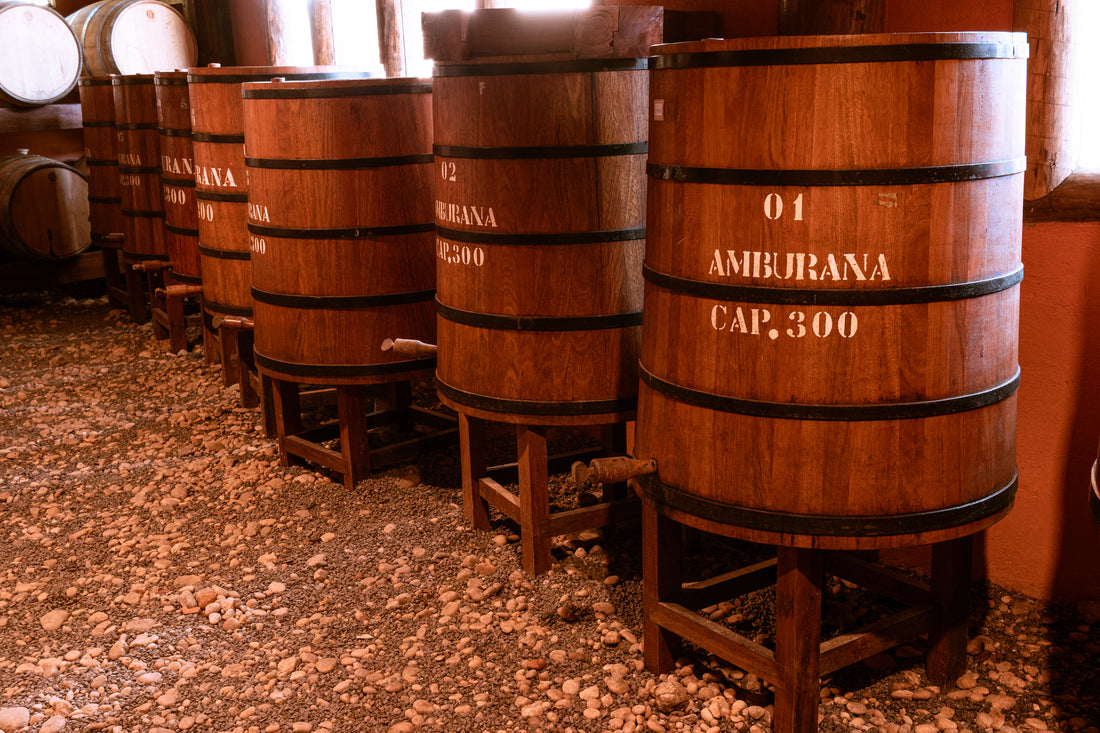For many of us, oak barrels are the standard way to age distilled spirits. Whisk(e)y, bourbon, rum, tequila—they all use some type of oak barrels for their aged products. Cachaça is different.
As I’ve written elsewhere, cachaça can be aged in dozens of different types of wooden vessels. Most notably, cachaça often uses tropical woods, many native to Brazil. When I first began my journey through cachaça, I thought that a cachaça aged for longer would be a better cachaça.
However, I quickly came to learn that this simply isn’t true. It’s not necessarily true for oak, of course, and a producer’s technical ability and artistry will have a great impact on the final product. What I learned is that each tropical wood is different and that a longer aging period does not automatically mean that an older cachaça will provide a greater sensory experience.
I want to provide an example of this. Amburana, which is probably the most famous Brazilian wood outside of Brazil, is one wood that does not provide a greater sensory experience when a distilled spirit is aged for a long period of time. As an example, let us consider a cachaça aged in Amburana for two years and another cachaça that has been aged for ten years by the same producer.
Now, of course, we are not considering the age of the barrels here. So, let’s just pretend that the barrels have been used for the same number of sessions and are the same age, prior to their use on these imaginary cachaças.
The Amburana aged for two years will likely provide a wonderful sensory experience—a nose full of cinnamon, spice, and vanilla; a palate that is warm and cinnamon, perhaps a slightly sweet finish. The Amburana aged for ten years will likely taste like a table.
Now, though this is a thought experiment, this does happen in real life. I’ve had many, many wonderful cachaças aged in Amburana. However, I know I’ve had at least two that were simply awful because the producer did not understand the impact of the wood on the final product.
Producers must understand the woods they’re working with. They must know that each wood they use is unique, and has its own properties, which may mean that they cannot simply leave their products in those vessels for very long periods of time.
Once you begin to understand the differences between woods, and how they impact flavor, you begin to see that an aging statement on a given cachaça is not necessarily an indicator of quality or value. Sure, with oak-aged product, you can probably be sure that an aging statement will have the same meaning as it does for other distilled spirits.
This is why it’s so important to sample a variety of cachaça. And this is exactly what Cachacier is here for—to help you discover a wide variety of the best cachaça from all over Brazil.
Remember to always sample responsibly. Happy sipping!



